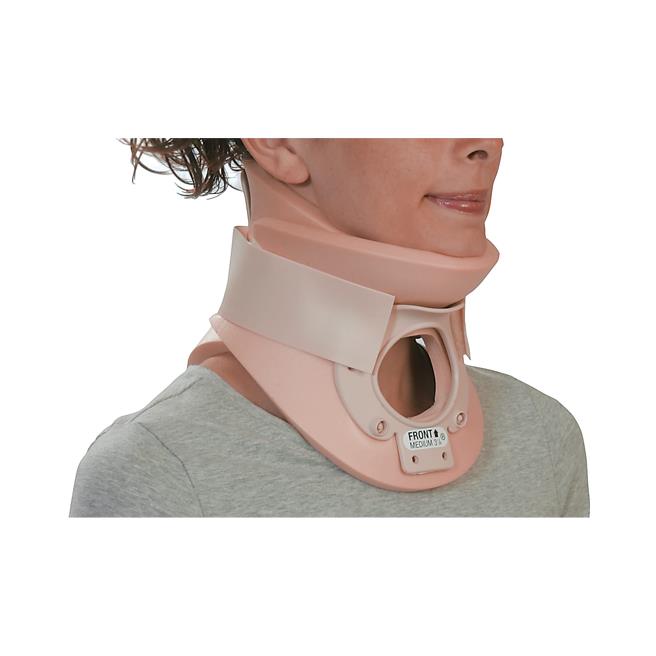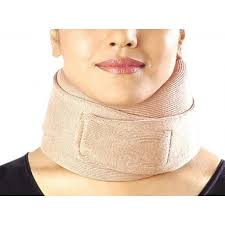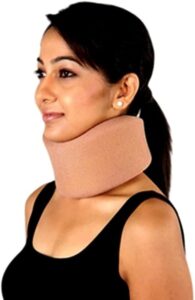

Forward head posture (FHP) is a common issue that has escalated with the increased use of digital devices like computers and smartphones.
This condition places undue stress on the neck and upper back, leading to discomfort, pain, and potential long-term damage. One solution that has gained popularity is the use of cervical collars.
These devices are designed to realign the head and neck, reduce pain, and help restore natural posture. But how exactly do they work, and can they really fix FHP?
In this article, bestforwardheadposturefix.com will explore the use of cervical collars, the science behind them, and provide a step-by-step guide on their correct usage.
“How to Use a Cervical Collar to Fix Forward Head Position” Article Index:
- What is Forward Head Posture (FHP)?
- How Cervical Collars Help Correct Forward Head Position
- Using a Cervical Collar: A Step-by-Step Guide
- Scientific Evidence Supporting Cervical Collars for FHP
- Potential Limitations and Precautions
- FAQs on Cervical Collar to Fix Computer Neck
- Conclusion: Can Cervical Collars Fix Forward Head Posture?
What is Forward Head Posture (FHP)?
Forward head posture (FHP) occurs when the head juts forward from the body’s natural alignment, placing excessive stress on the cervical spine.
This posture misalignment causes the muscles at the back of the neck to tighten while overstretching those at the front, leading to muscular imbalances and discomfort.
As a result, FHP has been linked to several issues, including neck pain, headaches, shoulder pain, and even respiratory problems due to the compression of the airways.
How Cervical Collars Help Correct Forward Head Position?
Let me divide this particular sub-heading into several smaller ones. This would help you understand the situation better:
Function and Purpose of Cervical Collars:
Support and Realignment
- Cervical collars, also known as neck braces, are designed to support the cervical spine and keep the head in a natural, upright position.
- Their primary function is to realign the head and neck, helping the cervical spine maintain its natural curvature.
- By encouraging the head to move back over the shoulders, they help reduce strain on neck muscles and ligaments.
Pain Reduction
- Proper spinal alignment with the use of cervical collars reduces muscle fatigue and tension, leading to decreased pain levels in individuals suffering from FHP.
Effectiveness in Correcting Forward Head Posture:
Military Personnel Study
- A study conducted on military personnel suffering from chronic neck pain due to FHP showed significant improvements in posture and pain reduction after using a cervical collar for six weeks (Journal of Physical Therapy Science, 2024).
Posture-Correction Interventions
- A systematic review published in the National Center for Biotechnology Information (NCBI) found that combining therapeutic exercises with cervical collars led to improvements in neck range of motion, posture correction, and pain reduction (NCBI, 2024).
Types of Cervical Collars:
Soft Collars
- Soft collars are made from flexible materials and provide minimal support.
- They are primarily used as a kinesthetic reminder to maintain proper posture but do not completely immobilize the neck (Physio-Pedia, 2024).
Rigid Collars
- Rigid collars are made from hard plastic or similar materials and provide significant support by limiting neck movement.
- These are often recommended for severe cases of FHP or after surgical procedures (Physio-Pedia, 2024).
Considerations and Usage Guidelines:
Duration of Use
- Prolonged use of cervical collars without medical supervision can lead to muscle atrophy and decreased neck strength.
- It is essential to follow a healthcare provider’s guidance on the duration and frequency of use (Spine-Health, 2024).
Combination with Exercises
- Using cervical collars in combination with posture-corrective exercises can improve results.
- Strengthening and stretching exercises targeting the neck and upper back are particularly beneficial (Spine-Health, 2024).
Cervical collars are an effective tool for managing Forward Head Posture by providing support, promoting proper alignment, and reducing associated pain.
When used correctly and alongside therapeutic exercises (such as neck tilts or scalene stretches), they can significantly contribute to improving posture and overall neck health.
Using a Cervical Collar: A Step-by-Step Guide
While using a cervical collar may seem straightforward, it’s essential to follow a precise method to achieve the best results:
- Choose the Right Collar: Select a c collar that fits your neck size and shape. Ensure it provides enough support without being too tight or restrictive.
- Position the Collar Properly: Place the collar around your neck with the chin rest comfortably supporting your jaw. The collar should keep your head level without allowing forward tilting.
- Gradual Adjustments: If your posture is significantly misaligned, you may need to adjust the collar gradually over time. Slowly retract the head backward until it is aligned over the shoulders. This process may take several weeks, depending on the severity of the FHP.
- Daily Wear: Start by wearing the collar for 20 minutes a day, gradually increasing the duration as your muscles adapt to the new posture. However, avoid wearing it for too long as overuse can lead to muscle dependency.
- Combine with Exercises: For optimal results, combine the use of a cervical collar with strengthening exercises that target the deep neck flexors and thoracic spine mobilization.
Scientific Evidence Supporting Cervical Collars for FHP
Numerous studies have supported the use of cervical collars as an effective intervention for correcting forward head posture.
For instance, research conducted in 2023 showed that wearing a cervical collar for several weeks significantly reduced neck pain and improved functional outcomes in individuals with FHP.
In another study, Cervigard™, a popular cervical collar brand, was shown to help patients realign the cervical spine by providing support to the posterior vertebrae and correcting the forward displacement of the head.
Potential Limitations and Precautions
While cervical collars offer many benefits, they are not without limitations. Over-reliance on the collar can lead to muscle weakness as the muscles responsible for supporting the head may become less active over time. It is important to follow a treatment plan that includes postural exercises to maintain the progress achieved with the collar.
Additionally, patients with more severe cases of FHP or underlying spinal issues should consult a healthcare professional before using a collar, as incorrect use can exacerbate the problem.
FAQs on Cervical Collar to Fix Computer Neck
Q1: What is a cervical collar, and how does it help correct forward head posture (FHP)?
A1: A cervical collar, also known as a neck brace, is a medical device designed to support and immobilize the neck. In the context of FHP, it helps by gently guiding the head back over the shoulders, promoting proper spinal alignment and reducing muscle strain associated with misalignment.
Q2: How should a cervical collar be properly fitted to correct FHP?
A2: To ensure effectiveness, the cervical collar should be snug but comfortable, allowing for slight movement without excessive restriction. It’s important to adjust the collar so that the head is positioned over the shoulders, aligning the cervical spine. Regular adjustments may be necessary to accommodate changes in posture and comfort levels.
Q3: What is the recommended duration for wearing a cervical collar to correct FHP?
A3: Wearing the cervical collar for at least 20 minutes daily is recommended to effectively address FHP. Consistency is key, and incorporating this practice into a daily routine can lead to noticeable improvements over time.
Q4: Are there specific activities or positions to avoid while wearing a cervical collar for FHP correction?
A4: While wearing the cervical collar, it’s advisable to avoid activities that may strain the neck, such as heavy lifting or prolonged periods of looking down. Maintaining good posture during daily tasks and taking regular breaks can enhance the effectiveness of the collar in correcting FHP.
Q5: Can a cervical collar be used in conjunction with other treatments for FHP?
A5: Yes, combining the use of a cervical collar with physical therapy exercises, ergonomic adjustments, and postural training can provide a comprehensive approach to correcting FHP. This multifaceted strategy addresses both the symptoms and underlying causes of misalignment.
Q6: Are there any potential side effects or risks associated with using a cervical collar for FHP correction?
A6: While generally safe, prolonged or improper use of a cervical collar can lead to muscle weakness or stiffness. It’s important to follow usage guidelines and consult with a healthcare professional to ensure appropriate use and to prevent potential complications.
Q7: How can I monitor progress and determine if the cervical collar is effectively correcting my FHP?
A7: Regular self-assessment, such as noting reductions in neck pain or improved posture, can indicate progress. Additionally, periodic evaluations by a healthcare provider can provide objective measurements of spinal alignment and muscle function, confirming the effectiveness of the treatment.
Q8: Is a cervical collar suitable for everyone with forward head posture?
A8: While cervical collars can be beneficial for many individuals with FHP, suitability depends on individual health conditions and the severity of the posture issue. It’s essential to consult with a healthcare professional to determine if this treatment is appropriate for your specific situation.
Conclusion:
Cervical collars, when used correctly, can be a valuable tool in determining the best forward head posture fix method. They provide the necessary support to realign the head and neck, reduce muscle strain, and alleviate associated symptoms.
However, for long-term success, cervical collars should be part of a broader approach that includes strengthening exercises and ergonomic adjustments to prevent the recurrence of FHP.
While the use of a cervical collar alone won’t provide a permanent fix, it offers significant short-term relief and facilitates the re-training of muscles to maintain proper alignment.
Ultimately, combining collar usage with posture-friendly habits and exercises is the key to long-term success in addressing forward head posture.
References:

